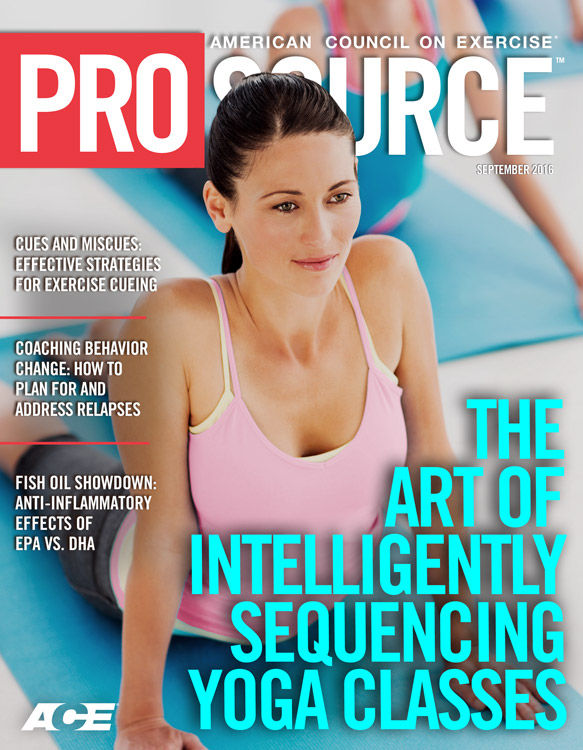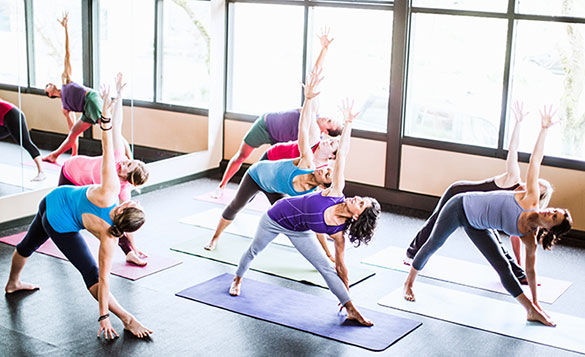
Regardless of what specific style of yoga you practice or teach, many of the classes of present day are thoughtfully constructed from shared principles disseminated by one of the most revered yoga teachers of all time. Often referred to as the father of modern-day yoga, Tirumalai Krishnamacharya is credited with the resurrection and subsequent transformation of hatha yoga, heavily influencing the physical practice most people associate with yoga today. A pioneer in refining and optimally sequencing yoga postures, Krishnamacharya’s teachings have spanned across the globe and serve as the foundation for most of the current yoga offerings, thanks primarily to the work of his most notable students, B.K.S. Iyengar, Pattabhi Jois, Indra Devi and his son, T.K.V. Desikachar.
Central to Krishnamacharya’s teachings is the pairing of asana (physical poses) and pranayama (breath control), a signature aspect of the now growing number of vinyasa-based yoga classes offered in studios, gyms and wellness centers around the world. Often described as the element of continuity in a yoga practice, the term vinyasa, when broken down to its Sanskrit roots, means “to place” (nyasa) “in a special way” (vi). When capitalized, Vinyasa refers to breath-synchronized movement, in which yoga poses are linked together using the breath to create continuous flow.
The guiding principles by which the sequence of postures is structured is essential to cultivating steadiness (sthira) and comfort (sukha) within the mind and the physical body. Krishnamacharya described this action of correctly organizing and constructing a gradual and intelligent course for yoga practice as vinyasa krama, meaning the steps or stages (krama) used to thoughtfully and progressively sequence or plan the physical poses. Experienced yoga educators of today describe this conscientious process as the art and science of intelligent sequencing, which requires extensive knowledge and skill on the part of the teacher to construct inclusive, purposeful yoga classes.
“Sequencing is my favorite part of preparing for a yoga class because it’s like putting a puzzle together to create a really beautiful, well-rounded and complete picture,” says Amanda Kriebel, DPT, E-RYT 500, physical therapist and experienced yoga teacher. “Not only is sequencing what makes each class unique and artistic, it’s extremely important for vinyasa-style classes to ensure that safety within the body is a priority, in combination with the flow and focused attention of the breath.”
Dynamically Prepare for the Practice
Although yoga encompasses much more than just asana, which is only one of the eight limbs of yoga as outlined in The Yoga Sutras of Patanjali, the physical postures the world has come to associate with the practice of yoga do play an important role. The Yoga Sutras suggest that for prana—one’s energy or life force—to move freely, there must first be a steadiness created within the body. Cultivating a steady body through the thoughtful, balanced and consistent practice of asana is something seasoned yoga teachers collectively stress the importance of, and many look no further than the world of fitness and exercise science for a long-established and research-supported framework from which to work.
“I approach a Vinyasa class with the basic bell curve of fitness in mind, in which I adequately warm, safely work, deeply stretch and then properly cool the body,” says Jane Bahneman, M.S., E-RYT 500, co-owner of Blue Nectar Yoga Studio in the Washington D.C. metro area. “I always offer plenty of amplifications and modifications of poses to suit each student, meeting them where they are that day on the mat. This approach makes sense physiologically, both for prevention of injury and for students to see progressive shifts in their practice.”
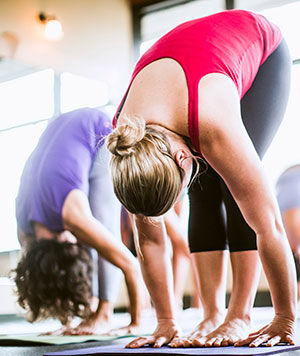
Just as a well-rounded, dynamic warm-up at the start of a workout can help decrease the risk of developing overuse injuries by addressing underlying muscle imbalances and enhancing quality of movements, so too can the earlier portion of a yoga class when centered on gradually preparing the body as an integrated unit. In the book Heart of Yoga, Desikachar discusses the importance of practicing asana dynamically, in which the movement into and out of the pose is repeated with the rhythm of the breath before practicing asana statically, in which the posture is held for several cycles of breath. From a physical perspective, this dynamic-to-static approach raises the body’s internal temperature and enhances neuromuscular efficiency, helping to develop more effective movement patterns and improved body awareness and alignment—both on and off the mat.
Given that the body is a kinetic chain comprised of joints that tend to favor stability (e.g., the scapulothoracic region and lumbar spine) as well as joints that favor mobility (e.g., the ankles, hips, thoracic spine and shoulders), it’s beneficial as part of the warming portion of a yoga class to utilize exploratory movements and foundational postures linked with the natural rhythm of the breath to establish adequate stability and mobility in these key areas of the body.
Chrys Kub, PT, E-RYT500, integrative physical therapist and creator of FitYogaTherapy, begins her classes by first focusing on establishing breath awareness before pairing the breath with simple, yet dynamic movements. “Utilizing simple, subtle movements of the spine, such as spinal flexion and extension, can help with enhancing inhalation (spinal extension) and exhalation (spinal flexion), while accessible poses such as cat/cow performed seated or on all fours and gentle seated twists allow students to further pair breath with movement while enhancing mobility in the thoracic spine,” notes Kub. “I also utilize intuitive movement, inviting students, for example, to move back and forth from all-fours into child’s pose, to make big hip circles and to even dynamically explore downward facing dog, all of which serves as an excellent foundation for and transition into, sun salutations.”
Elizabeth Kovar, M.A., ACE master trainer and author of Finding Om, encourages both new and seasoned teachers alike to resist the temptation to “wow” students with sequences that may overlook the basics in favor of more grandiose postures, especially early on in the class. “As classes become more ‘innovative,’ some teachers are choosing to dive right into the heavy stuff without warming up,” says Kovar. “Starting in intense poses, like navasana (boat pose) might seem like a way to challenge and push students, but it lacks intelligence and appreciation for the muscular system, as well as awareness of and attention to, the mind-body connection.”
Gradually Prepare the Body for Peak Poses
While there are a number of different ways in which to sequence a class, such as utilizing a particular theme or focusing on a specific area of the body, many teachers choose to home in on a peak posture—also known as an apex pose—which warrants a particularly thoughtful approach to planning.
“Intelligent sequencing builds from simple, foundational poses to more complex poses with intention, requiring an understanding of the various component parts of the peak pose selected to allow students to open their bodies safely and effectively,” shares Stacy McCarthy, B.S., E-RYT500, international yoga educator and professor of yoga studies at MiraCosta College. “For example, if you are guiding students into natarajasana (dancer’s pose), which is a complex balancing posture with a back bending element, it will require students to have established stability in their foundation, and mobility in the thoracic spine and hips. As such, the lead up to this pose may feature preparatory postures such as anjaneyasana (crescent lunge) and vrksasana (tree pose).”
In addition to understanding the “why” behind each pose included in the sequence, it’s also important to understand the “how” in terms of adapting postures to meet individuals where they currently are—a key concept stressed in the teachings of both Krishnamacharya and Desikachar. By providing progressions and regressions of poses, such as offering variations in lever length, number of contact points and/or base of support, for example, a diverse group of students can each individually reap the intended benefits of the purposefully structured sequence, all within one inclusive, cohesive class experience.
Rethink the Approach to Counterposes
While each asana offers an assortment of positive, beneficial attributes, each one can also produce negative effects, especially when practiced excessively and without a balanced approach. To neutralize the potentially negative effects of a posture, Desikachar suggests utilizing other postures, known as counterposes, to balance and alleviate excess tension. For example, the effects of a deep backbend, such as ustrasana (camel pose) can be countered with a forward bending posture such as paschimottanasana (seated forward fold). The practice of counterposes, or pratikriyasana, is intended to return the body to a normal and balanced state. However, mindful transitions must be considered when moving between two such extremes.
“In the early days of yoga in the West it was taught that teachers should alternate poses and counterposes back-to-back within a sequence. However, this typically is not a skillful approach to structuring a class, as generally one pose should lead students into the next pose by means of its similarity with the next position, as opposed to opposition,” explains Kub. “That being said, while the strict arrangement of pose and counterpose is generally not good practice, it is important in crafting an intelligent class sequence to complement a backbend or deep forward bend with an oppositional pose somewhere later in the practice.”
McCarthy encourages teachers to carefully consider asana selections and the subsequent ordering of poses to minimize the potential for developing imbalances in the body. “As teachers, we want our students to leave feeling balanced and harmonious, both physically and energetically,” shares McCarthy. “One of my favorite things to remind my students and myself in practice is to use everything and overuse nothing.”
A Science-based Blueprint for Designing Yoga Classes
In celebration of National Yoga Month, ACE is proud to present, for a limited-time, free one-hour recorded course to further explore the topic of intelligent sequencing. If you’re inspired to create and offer more compelling, thoughtfully structured yoga classes, watch as Jessica Matthews discusses how to utilize a science-supported blueprint for fostering more inclusive class experiences.
CLICK HERE >
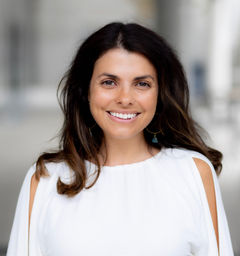




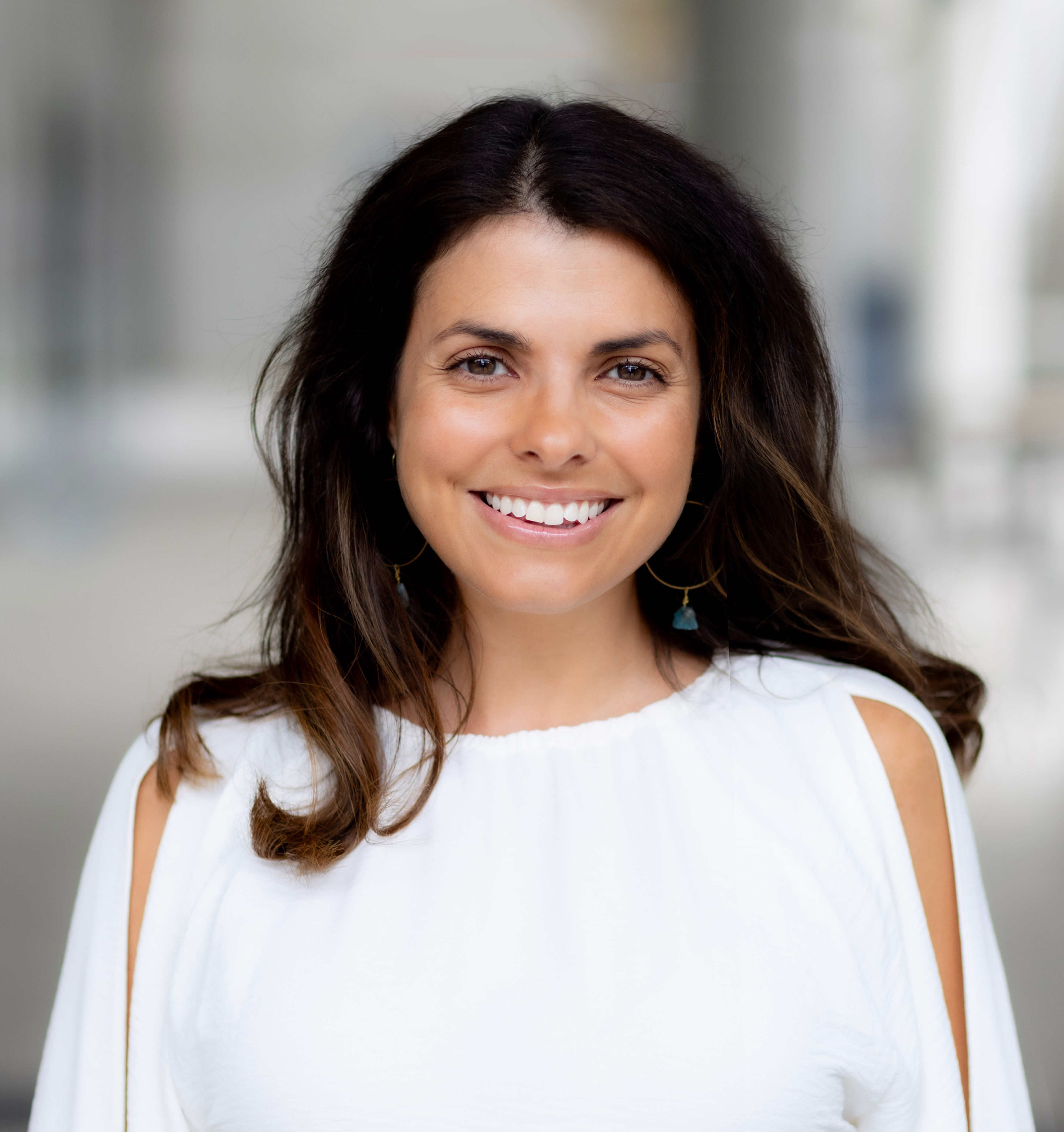 by
by 